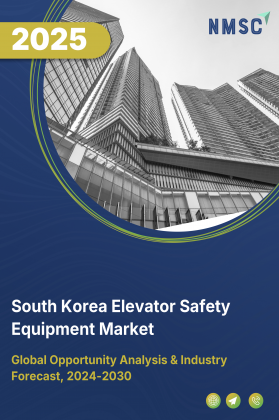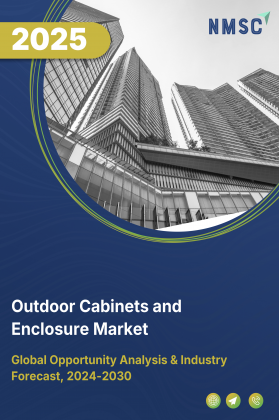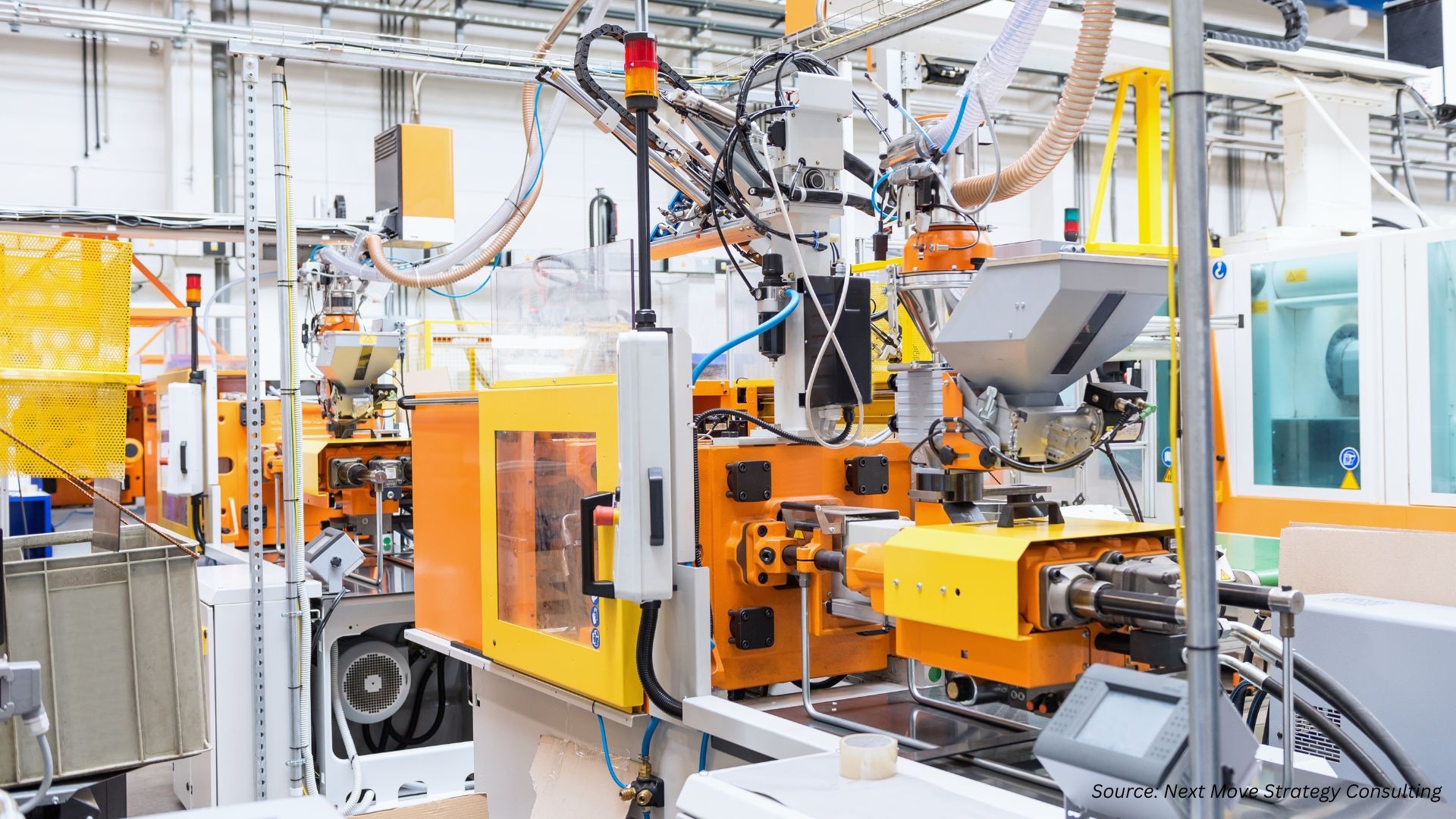
Compaction Prevention System Market by Type (Single Vibratory Roller Systems, Double Vibratory Roller Systems, Others), by Application (Soil Compaction, Asphalt Compaction, Others), and by End User (Transportation Infrastructure, Mining & Quarrying, Urban Development, Industrial Facilities), by Distribution Channel (OEM Direct Sales, Dealers & Distributors, Aftermarket Services) and Others – Global Opportunity Analysis and Industry Forecast, 2025–2030
Industry Outlook
The global Compaction Prevention System Market size was valued at USD 1.33 billion in 2024, with an estimation of USD 1.43 billion in 2025 and is predicted to reach USD 2.06 billion by 2030 with a CAGR of 7.5% from 2025-2030.
The sector is witnessing strong growth, driven by rising infrastructure development, growing demand for construction quality and efficiency, and the increasing emphasis on environmental sustainability. Governments and private players are investing heavily in roads, highways, airports, railways, and smart city projects, fueling the adoption of advanced compaction technologies that ensure uniform density, reduce rework, and enhance structural durability.
While high upfront costs and integration challenges pose restraints, the market is finding new growth opportunities through the integration of IoT, AI, and data analytics, enabling real-time monitoring, predictive insights, and smart construction solutions. These trends are positioning compaction prevention systems as critical tools for sustainable and efficient infrastructure development worldwide.
The compaction prevention system market report includes companies that provide compaction prevention services through various systems such as industrial vibrators, feeders, oscillators, pneumatic flow aids, and bulk material handling solutions for agricultural, construction, mining, and industrial applications.
Rising Infrastructure Development Drives the Compaction Prevention System Drives Market Growth
Rising infrastructure development is a key driver of the compaction prevention system market expansion, as governments and private players worldwide are investing heavily in roads, highways, railways, airports, and urban expansion projects that require precise and durable soil and asphalt compaction.
Rapid urbanization in regions like Asia-Pacific and Africa, coupled with large-scale investments in smart cities and transportation networks, is fuelling demand for advanced technologies that minimize over-compaction, ensure uniform density, and improve structural stability. By enhancing construction quality, reducing rework, and supporting long-term sustainability, compaction prevention systems are becoming integral to modern infrastructure development initiatives.
Growing Demand for Quality and Efficiency in Construction Boosts the Compaction Prevention System Market Demand
The growing demand for quality and efficiency in construction is significantly driving the market, as contractors and developers increasingly prioritize precision, cost-effectiveness, and long-term performance in their projects. Traditional compaction methods lead to uneven density, material wastage, and costly rework, which delay timelines and compromise structural integrity. Compaction prevention systems address these challenges by providing real-time monitoring, data-driven control, and optimized machine operations that ensure uniform compaction with fewer passes. This not only enhances construction quality but also improves productivity, reduces fuel consumption, and lowers overall project costs, making these systems highly valuable in meeting modern construction standards.
Environmental and Sustainability Regulations Fuels the Compaction Prevention System Market Expansion
Environmental and sustainability regulations are emerging as a strong driver of the market, as governments and industry bodies enforce stricter standards to minimize environmental impact and promote greener construction practices. Traditional compaction methods result in excessive fuel consumption, higher CO₂ emissions, and inefficient use of resources. Compaction prevention systems, equipped with intelligent controls and real-time monitoring, help optimize machine passes, reduce energy usage, and minimize material wastage, aligning with sustainability goals. By enabling contractors to comply with emission norms and environmental guidelines while also lowering operational costs, these systems are increasingly being adopted as essential tools for sustainable infrastructure development.
High Upfront Cost of Implementation Limits the Market Growth
One of the key restraints of the compaction prevention system market growth is the high upfront cost of implementation. These systems involve advanced hardware, such as sensors and GPS modules, along with sophisticated software for real-time monitoring and analytics, which significantly increase the purchase price compared to traditional compaction equipment. For small and mid-sized contractors, especially in developing regions, the initial investment be prohibitive, limiting widespread adoption. Additionally, the cost of operator training and system integration into existing machinery further adds to the financial burden, slowing down market penetration despite the long-term savings these systems deliver.
Integration of IoT, AI, & Data Analytics for Smart Construction Creates New Growth Opportunities
One major opportunity for the market lies in the integration of IoT, AI, and data analytics for smart construction. With the construction industry rapidly adopting digital transformation, there is a growing demand for intelligent compaction solutions that not only prevent over- or under-compaction but also generate actionable insights for predictive maintenance, performance optimization, and project planning. By leveraging cloud connectivity and real-time data sharing, these systems be integrated into broader smart city and infrastructure development initiatives, creating new revenue streams for equipment manufacturers and solution providers. This shift toward digital, connected construction offers significant growth potential, especially in technologically advanced markets.
Market Segmentations and Scope of the Study
The market report is segmented by type, distribution channel, application, end-user, and region. By type, the market is divided into single vibratory roller systems, double vibratory roller systems, intelligent/continuous compaction control systems, and other compaction prevention technologies. Based on distribution channel, the market is categorized into OEM (original equipment manufacturer) direct sales, dealers & distributors, and aftermarket services. By application, the market spans soil compaction, asphalt compaction, landfill & embankment compaction, industrial ground/surface compaction, and others. By end-user, the market covers transportation infrastructure, mining & quarrying, urban development, and industrial facilities. Regional coverage includes North America, Europe, Asia-Pacific, and Rest of the World (RoW).
Geographical Analysis
One key driver of the compaction prevention system market share in North America is the increasing investment in infrastructure modernization. The U.S. government’s Infrastructure Investment and Jobs Act (IIJA), along with state-level funding programs, is channelling billions of dollars into upgrading highways, bridges, airports, and public transit systems. These large-scale projects demand advanced compaction technologies to ensure durability, compliance with strict construction standards, and efficient use of resources. As contractors in North America focus on improving project quality, reducing rework, and meeting sustainability goals, the adoption of compaction prevention systems is accelerating, making infrastructure investment a major growth catalyst in the region.
In Europe, a major driver of the market is the region’s strict environmental and construction quality regulations. The European Union has established rigorous standards for sustainable construction, reduced carbon emissions, and efficient resource utilization in infrastructure projects. These policies push contractors to adopt advanced technologies like compaction prevention systems, which minimize fuel consumption, optimize machine passes, and ensure long-term durability of roads, railways, and urban infrastructure. Additionally, Europe’s strong focus on smart city development and green infrastructure further accelerates the demand for intelligent, eco-friendly compaction solutions.
In Asia Pacific, the compaction prevention system market is strongly driven by rapid urbanization and massive infrastructure development initiatives. Countries like India and China are leading this trend, with urban populations accounting for 37% and 66% of the total, respectively, in 2024 according to the World Bank. This demographic shift is fuelling large-scale investments in highways, metro systems, airports, and smart city projects to meet growing urban needs. As construction activity intensifies, the demand for advanced compaction technologies that ensure structural durability, efficiency, and cost-effectiveness is rising, making compaction prevention systems a critical enabler of sustainable infrastructure growth in the region.
In the Rest of the World (ROW), the compaction prevention system market is primarily driven by growing investments in transportation and energy infrastructure across regions like the Middle East, Africa, and Latin America. Expanding oil & gas projects in the Middle East, rapid road and housing development in Africa, and modernization of ports and airports in Latin America are creating significant demand for reliable and durable construction solutions. With many of these regions focusing on improving connectivity and attracting foreign investments, the adoption of advanced compaction prevention systems is gaining traction as they help enhance construction quality, extend infrastructure lifespan, and optimize project efficiency.
Strategic Innovations Adopted by Key Players
Key players in the compaction prevention system industry are driving market growth through global product launches, advanced demonstration tools, and sustainable technology innovations that enhance flow efficiency, reduce material blockages, and strengthen their global market presence.
-
In January 2025, NZ Engineering News recognized OLI S.p.A. for “setting the vibration technology standard,” highlighting its versatile and reliable vibration systems used in compaction prevention and bulk material handling. The feature emphasized OLI’s strong customer reputation, global reach, and ongoing innovation in sustainable, efficient vibration technology that ensures smooth material flow across industrial and agricultural sectors.
-
In October 2024, Syntron Material Handling launched an engaging animation demo to showcase the capabilities of its new B-HC feeders. The visual presentation highlighted the feeders’ high capacity, precision performance, and reliability in handling bulk materials, while also emphasizing their role in improving flow efficiency and reducing material compaction issues across industrial applications.
-
In October 2024, OLI S.p.A. expanded its global footprint by launching the MVM Series oscillators in South Africa. These high-performance units are designed for heavy-duty vibration tasks, offering enhanced durability and minimized mechanical stress during start and stop cycles. The launch supports industries like mining, construction, and bulk material handling, where reliable vibration technology is essential for preventing material blockages and compaction.
Key Benefits
-
The report provides quantitative analysis and estimations of the sector from 2025 to 2030, which assists in identifying the prevailing compaction prevention system market opportunities.
-
The study comprises a deep-dive analysis of the current and future compaction prevention system market trends to depict prevalent investment pockets in the industry.
-
Information related to key drivers, restraints, and opportunities and their impact on the compaction prevention system market study is provided in the report.
-
Competitive analysis of the key players, along with their market share is provided in the report.
-
SWOT analysis and Porters Five Forces model is elaborated in the study.
-
Value chain analysis provides a clear picture of the roles of stakeholders.
Compaction Prevention System Market Key Segments
By Type
-
Single Vibratory Roller Systems
-
Double Vibratory Roller Systems
-
Intelligent/Continuous Compaction Control Systems
-
Other Compaction Prevention Technologies
By Distribution Channel
-
OEM (Original Equipment Manufacturer) Direct Sales
-
Dealers & Distributors
-
Aftermarket Services
By Application
-
Soil Compaction
-
Asphalt Compaction
-
Landfill & Embankment Compaction
-
Industrial Ground/Surface Compaction
-
Others
By End User
-
Transportation Infrastructure
-
Roads & Highways
-
Airports
-
Railways
-
Mining & Quarrying
-
Urban Development
-
Smart City Projects
-
Commercial Real Estate
-
Industrial Facilities
-
Manufacturing Plants
-
Logistics Yards / Warehouses
By Region
-
North America
-
The U.S.
-
Canada
-
Mexico
-
-
Europe
-
The UK
-
Germany
-
France
-
Italy
-
Spain
-
Denmark
-
Netherlands
-
Finland
-
Sweden
-
Norway
-
Russia
-
Rest of Europe
-
-
Asia-Pacific
-
China
-
Japan
-
India
-
South Korea
-
Australia
-
Indonesia
-
Singapore
-
Taiwan
-
Thailand
-
Rest of Asia-Pacific
-
-
RoW
-
Latin America
-
Middle East
-
Africa
-
Key Players
-
OLI S.p.A.
-
Martin Engineering Company
-
Syntron Material Handling, LLC
-
Cleveland Vibrator Company
-
NAVCO (National Air Vibrator Company)
-
Palamatic Process SAS
-
Vibra Screw Inc.
-
Metalfab MHS, LLC
-
JVI Vibratory Equipment, Inc.
-
Deca Vibrator Industries, Inc.
-
Control Concepts, Inc. (AirSweep)
-
Solimar Pneumatics, Inc.
-
Eriez Manufacturing Co.
-
Evolante Consulting
-
WAMGROUP S.p.A.
Report Scope And Segmentation:
|
Parameters |
Details |
|
Market Size in 2025 |
USD 1.43 Billion |
|
Revenue Forecast in 2030 |
USD 2.06 Billion |
|
Growth Rate |
CAGR of 7.5% from 2025 to 2030 |
|
Analysis Period |
2024–2030 |
|
Base Year Considered |
2024 |
|
Forecast Period |
2025–2030 |
|
Market Size Estimation |
Billion (USD) |
|
Growth Factors |
|
|
Countries Covered |
28 |
|
Companies Profiled |
15 |
|
Market Share |
Available for 10 companies |
|
Customization Scope |
Free customization (equivalent up to 80 working hours of analysts) after purchase. Addition or alteration to country, regional, and segment scope. |
|
Pricing and Purchase Options |
Avail customized purchase options to meet your exact research needs. |

















 Speak to Our Analyst
Speak to Our Analyst
























